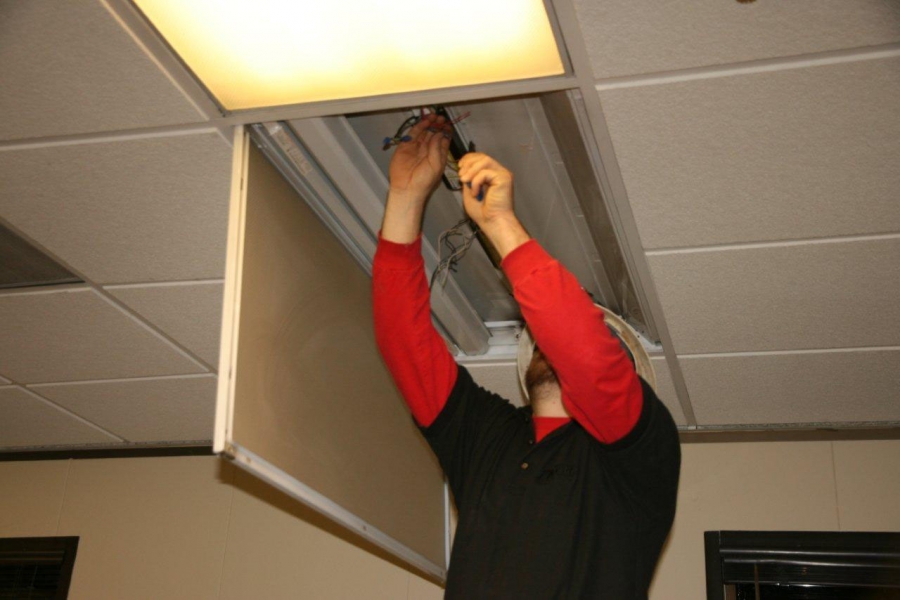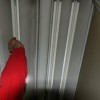Return on Investment (ROI): T5 Lighting Adapter Retrofits Offer Savings
When considering a florescent lighting system upgrade, many facilities managers are retrofitting by placing adapters in existing lighting fixtures. Lighting retrofit kits with adapters have advantages over more comprehensive lighting system component upgrades – they reuse existing lamp fixtures, provide new self-contained electronic lamp ballasts, and offer reduced installation, maintenance, and operating costs. We’ll take a look at the basic ideas involved in a T5 lighting retrofit project, including a return on investment (ROI) case study that calculates payback as less than five years.

T5 Lighting Adapters
One of the most popular lighting adapter projects involves converting T12 and T8 florescent lighting fixtures to newer T5 lamps, which offer higher operating efficiencies. The designation of T5 versus T8 or T12 refers to the diameter of a tubular lamp in eighths of an inch. A T5 lamp is 5/8” in diameter, a T8 is 1" in diameter, and a T12 is 1-1/2" in diameter. T5 adapter kits come in lamp lengths of 2', 3', and 4' to match existing fixtures, but the actual lamp lengths for T5s are shorter. For example, in the 4’ fixture application, T5 lamps are actually 46”, not 48”, in length, which accommodates the adapter kit and new ballast. T5 lamps cannot be used as direct replacement lamps in existing T8 and T12 lighting fixtures. T5 lamps also offer significant energy savings – they produce less heat and have a higher efficiency rating in terms of lumens per watt.
Cost and Site Conditions
As efficient as they are, individual T5 lamps are generally more expensive than T8 and T12 lamps. T12 lamps are becoming obsolete from an energy-efficiency viewpoint, but there are many still in service – a big reason that T5 lighting retrofit kits with adapters are increasing in popularity.
As with any retrofit project, determining a cost–benefit analysis and payback period is important. The cost–benefit analysis should also reflect whatever adjustments in total lighting output are desired (or tolerable), specifically any necessary increases or potential decreases in target light levels. A T8 to T5 lighting retrofit might be attractive if the overall lighting levels for a specific application (such as a parking garage) would concurrently allow for a reduction in the number of lamps in the system. Because they are closer in overall efficiency ratings, T5 to T8 lighting retrofits require a more careful analysis than a T12 to T5 conversion.
The operating life of each lamp (new T5s versus the existing lamps) should also be considered. Most fluorescent lamps will have service lives in the general range of 20,000 hours of use, with the T5 adapter ballast generally having a service life three times as long. Specific warranty terms (5-year free replacements on ballasts, etc.) can also figure into the payback projections for a particular retrofit, as well as any tax rebates that can be achieved by complying with various government energy programs.
Calculating Payback: Return on Investment (ROI)
Considering all these factors, we find that most T5 lighting retrofit projects offer a payback period of less than five years, and some projects have much shorter payback periods. It is always important to conduct a cost–benefit analysis before pursuing a T5 relamping project.
T5 Lighting Adapter Case Study (Courtesy of Value Energy Lighting Solutions)
In 2010, the Newburgh, New York, School District needed to reduce operating costs so that they could continue to provide high-quality education with minimal impact on taxpayers. Increasing energy costs were one of their biggest challenges. The T5 lighting retrofit project for the Newburgh School District helps to demonstrate the ROI (without consideration of any tax rebates):

If the existing lighting fixtures are in sound condition to receive a retrofit, T5 lighting adapters are often an excellent approach to achieve energy cost savings without incurring a larger capital expense.
Chris Owens with Value Energy Lighting Systems was a technical contributor to this feature.

Andrew Kimos
Andrew Kimos completed the civil engineering programs at the U.S. Coast Guard Academy (B.S. 1987) and the University of Illinois (M.S. 1992) and is a registered Professional Engineer in the state of Wisconsin. He served as a design engineer, construction project manager, facilities engineer, and executive leader in the Coast Guard for over 20 years. He worked as a regional airline pilot in the western U.S. before joining the Buildipedia.com team as Operations Channel Producer.
Website: buildipedia.com/channels/operations




